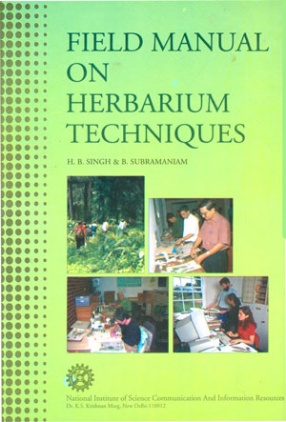Chromosome Atlas of Flowering Plants of the Indian Subcontinent (In 2 Vols.)
Synopsis
From the foreword by Dr. M.S. Swaminathan: Director General, International Rice Research Institute, Manila. "Recent advances in molecular biology have opened by unusual possibilities for the construction of molecular linkage maps and for gene transfer across sexual barriers. A basic requisite in such work is a precise understanding of chromosome numbers and morphology. Unfortunately in many plants, we still do not know the chromosome number and whether chromosome races within a species or polyploidy within the genus occur. It is in this context that the present compilation made by Drs. Virendra Kumar and B. Subramaniam assumes great significance and value. As mentioned by the authors, over 15,000 angiosperm species occur in India. All the knowledge available up to 1982 has been brought together in this book. The authors have drawn attention to the fact that less than 50% of the angiosperm species occurring in India have been subjected to cytological studies. Therefore, this book not only gives information on what we know but also bring out clearly the gaps in existing knowledge. We cannot take advantage of the tools of molecular genetics if we do not have basic information on chromosome number and structure helpful to the development of a standardised system of chromosome nimenclautre in each species. The authors have arranged the available information in a very methodical and informative manner. We owe them a deep debt of gratitude for the careful and painstaking work they have done over 10 years to help all fellow scientists and scholars interested in the cytology and breeding of the flowering plants of the Indian subcontinent.
Read more
17.10
15.39
$
18.00 $
Free delivery Wolrdwidе in 10-18 days
Ships in 2-4 days from New Delhi
Membership for 1 Year $35.00
Get it now and save 10%
Get it now and save 10%
BECOME A MEMBER
Books by the same authors








It is the only indispensable work available that gives comprehensive information on chromosome numbers in context of angiosperm flora of Indian subcontinent. The importance of such a work had been earlier realized by C D. Darlington himself in his 'Chromosomal Atlas of Flowering Plants' published many decades earlier but that did not cater much to plants of Indian subcontinent. Also the literature kept on accumulating and there was no systematic account of what was going on Post-Darlington work. It also assumes greater significance given that the Indian subcontinent has a unique geological history and presents a much varied and diverse climate and habitats. India has some of the world's plant biodiversity hotspots besides numerous taxa endemic to it but we never had basic chromosome information available so handy. It also speaks about the painstaking, continuous and laborious effort to compile so much information in such practical way. The two volumes cater to Dicots and Monocots, separately. Plant families, genera, species, subspecies, varieties are arranged alphabatically for user's ease. For each family and genus, geographical distribution is also given. Extensive bibliography is given in the end. I personally feel that the authors must be congratulated for bringing out such a valuable piece of work.
Bibliographic information
B. Subramaniam